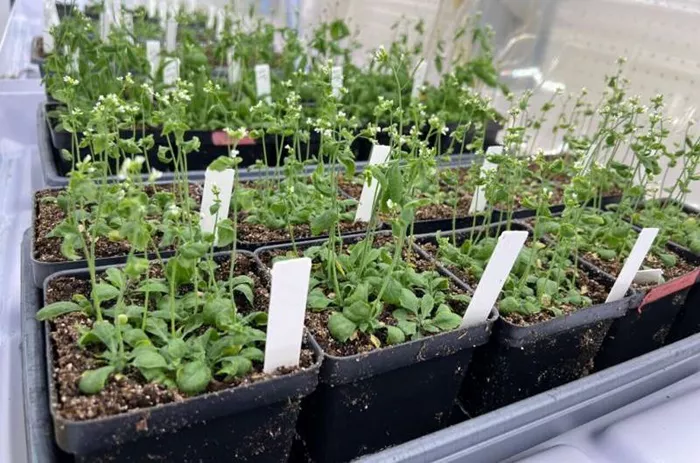Researchers at Texas A&M AgriLife have identified a significant target for regulating gene expression and cellular processes. This breakthrough could enhance crop resilience and deepen our understanding of various human diseases.
The focus of this research is RNA regulation, which, when disrupted, is often linked to neurodegenerative diseases like Alzheimer’s and Parkinson’s, as well as several cancers. Enhancing specific RNA production processes may lead to new therapies and more resilient crops.
Led by Xiuren Zhang, Ph.D., a professor in the Texas A&M College of Agriculture and Life Sciences, the research team set out to understand how RNA processes work together within cells. Their findings, published in Nature Cell Biology, reveal that a protein called Serrate connects two vital functions: RNA modification and microRNA production.
“We discovered that certain RNA processes influence each other instead of operating in isolation,” Zhang said. “These insights could enable us to regulate gene expression more effectively, benefiting both crop science and human health.”
Zhang’s team, including postdoctoral researcher Songxiao Zhong and scientists from Texas A&M AgriLife Research, the Texas A&M College of Medicine, the University of Nebraska, and the Guangdong Provincial Key Laboratory of Biotechnology for Plant Development, conducted the study.
The Role of RNA in Health and Agriculture
RNA plays several critical roles in cells, such as acting as messengers, translating genetic codes into proteins, and regulating gene expression. These functions are essential for maintaining healthy cells and organisms.
Zhang explained that producing RNA requires precise steps to ensure that each molecule is correctly formed and modified. “Think of RNA modifications like punctuation in a sentence,” he said. “They can emphasize certain instructions, create pauses, or stop some RNA from being used entirely.”
Serrate’s Function in RNA Modification
In their study, Zhang and Zhong explored RNA modifications, focusing on the most common type: N6-adenosine methylation (m6A). This modification has been shown to influence the yield of crops like rice and corn and their resilience to viral infections.
The team examined the molecular machine responsible for adding m6A to mRNA. They discovered that Serrate helps prevent the machine from becoming tangled and ensures that the m6A modification process runs smoothly.
Although Serrate’s functions in other biological processes were known, its role in m6A modification was previously unrecognized. The study found a link between m6A modifications and the production of microRNA.
Connecting mRNA and MicroRNA
While Zhang’s lab has studied Serrate for its role in microRNA production, this study highlights its involvement in mRNA modifications as well. MicroRNAs regulate gene expression by eliminating unnecessary RNA or stopping certain RNAs from being translated into proteins.
Zhong noted, “Both processes have been studied separately, but their interaction has been largely overlooked. We found that Serrate acts as a bridge between these two essential mechanisms, marking a crucial step in our fundamental research. Understanding this coordination is vital for developing new treatments.”
Implications for Health and Agriculture
Zhang emphasized that this discovery could lead to treatments targeting RNA modification processes to address gene regulation issues, providing insight into fundamental biological processes.
“With a clearer understanding of how m6A is regulated, we can explore new drug discovery avenues,” Zhang said. “Targeting these pathways could help develop treatments for diseases linked to RNA regulation problems.”
These findings also hold significant potential for agriculture. RNA modifications play a role in how plants respond to environmental stresses, such as drought, salinity, and pathogens. The research team believes that manipulating these RNA processes could enhance crop resilience and productivity.
Looking ahead, the team plans to expand their studies to investigate RNA processes in other crops and human cells.
“This study provides a fresh perspective on RNA regulation across various species,” Zhang said. “We are eager to explore how this knowledge can improve human health and agricultural practices in the future.”
Related topics:
- In the Garden with Felder: Stunning Plants So Easy, Even the Dead Could Grow Them
- Alan Titchmarsh’s Top Picks for Garden Plants He’d Gladly Banish
- Vibrant Woody Plants That Attract Butterflies and Moths


